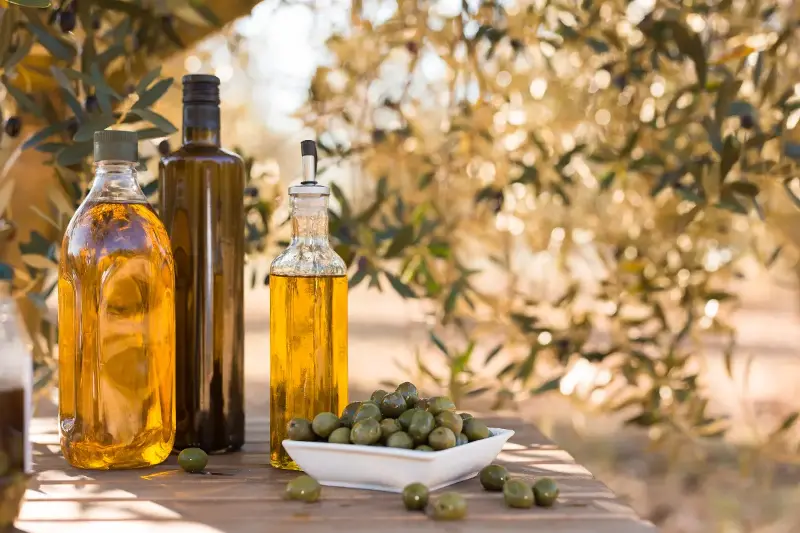Each Southeast Asian kitchen is a vibrant stage, where sizzling aromas and colourful ingredients come together for daily culinary performances. But at the heart of every great stir-fry or salad dressing lies a crucial decision: which oil earns pride of place in your pantry? The debate is often between olive oil, famed for its Mediterranean flair, and canola oil, a staple across many global kitchens. Both claim impressive health benefits and distinct flavours—so which one truly rules your kitchen?

Exploring Their Origins
Olive oil and canola oil come from very different backgrounds. Olive oil is the golden icon of Mediterranean cuisine, extracted from pressing whole olives. It is legendary in countries such as Spain, Italy, and Greece, and holds a rich place in both tradition and health culture.
Canola oil, in contrast, has its roots in Canada—its name cleverly derived from “Canadian oil, low acid”. It is made from the seeds of the canola plant, a specially bred version of rapeseed, which was developed to remove bitter compounds and increase health benefits. Canola oil is popular in Southeast Asia for its versatility, neutral flavour, and wallet-friendly price.
Unpacking Health Benefits: What’s Best for Your Heart?
The health conversation around cooking oils often zeroes in on fat content. Olive oil—especially extra-virgin—packs healthy monounsaturated fats, known to help reduce bad cholesterol (LDL) and support good cholesterol (HDL). It also comes brimming with antioxidants and vitamin E, both essential for protecting your cells from damage. Several studies even suggest olive oil contributes to lower risks of heart disease and stroke, especially as part of a Mediterranean-style diet.
Canola oil is not far behind. It contains one of the lowest amounts of saturated fat among all cooking oils (only about 7%), and is rich in polyunsaturated fats like omega-3 and omega-6, which your body needs but can’t produce itself. These fats have been shown to lower cholesterol levels and benefit overall cardiovascular health. That said, canola oil is often refined, which can strip away some natural nutrients, though its fat profile remains impressive.
For those watching their waistlines, both oils are calorie-dense—about 120 calories per tablespoon—so moderate use is still key.

Flavour Face-Off: Mediterranean Zing or Neutral Canvas?
When it comes to taste, olive oil and canola oil play very different roles in the kitchen. Extra-virgin olive oil boasts a bold, grassy, sometimes peppery flavour that can elevate everything from a Caprese salad to garlic prawns. Its unique taste adds character, making it a favourite for dressings, dips, and drizzling over cooked vegetables or even crusty bread.
Canola oil, on the other hand, is the quiet achiever. Its mild, almost flavourless profile means it won’t overpower delicate dishes—a real advantage for Asian stir-fries, steamed fish, or baking where you want the other flavours to shine. Its high smoke point also makes it great for deep-frying spring rolls or banana fritters, as it doesn’t break down or become bitter at high temperatures.
Smoke Point and Cooking Performance
Every chef and home cook alike should consider an oil’s smoke point—the temperature where the oil starts to break down and release smoke, losing nutrients and potentially developing harmful compounds.
Extra-virgin olive oil has a moderate smoke point (about 190–210°C), making it ideal for sautéing, dressing, or low-heat roasting but less perfect for deep-frying. “Light” olive oil, with more refining, can handle higher heat.
Canola oil’s smoke point is much higher (about 200–230°C), which means it stands up well to high-heat Southeast Asian techniques such as wok-frying or grilling satay skewers. It’s also a popular choice for home bakers due to its neutral flavour and ability to blend seamlessly into dough and batters.

Local Availability and Sustainability
Southeast Asia’s culinary landscape is shaped by practical choices. Canola oil is often affordable and available in supermarkets everywhere, while high-quality olive oil—especially extra-virgin—might be pricier or harder to source, depending on the country.
Sustainability is another talking point. Olive groves, especially traditional ones, encourage biodiversity, though modern intensive farming may have a higher environmental cost. Canola, mostly grown in temperate climates, typically relies on large-scale agriculture. Look for oils labelled as “cold-pressed,” “sustainably farmed,” or backed by reputable certifications if you’re trying to shop green.
There is no single answer that fits every kitchen. Olive oil shines when you want to add bold character, health benefits, and a taste of Mediterranean sunshine to your table. Canola oil, with its affordability, versatility, and subtlety, is a workhorse for everything from everyday stir-fries to deep-fried delights.
Perhaps the real secret is letting both oils take a turn on your culinary stage: olive oil for dressings and finishing, canola oil for high-heat cooking and baking. Either way, knowing the strengths of each gives you the flavour, health, and flexibility you need to rule your kitchen with confidence—one delicious dish at a time.
